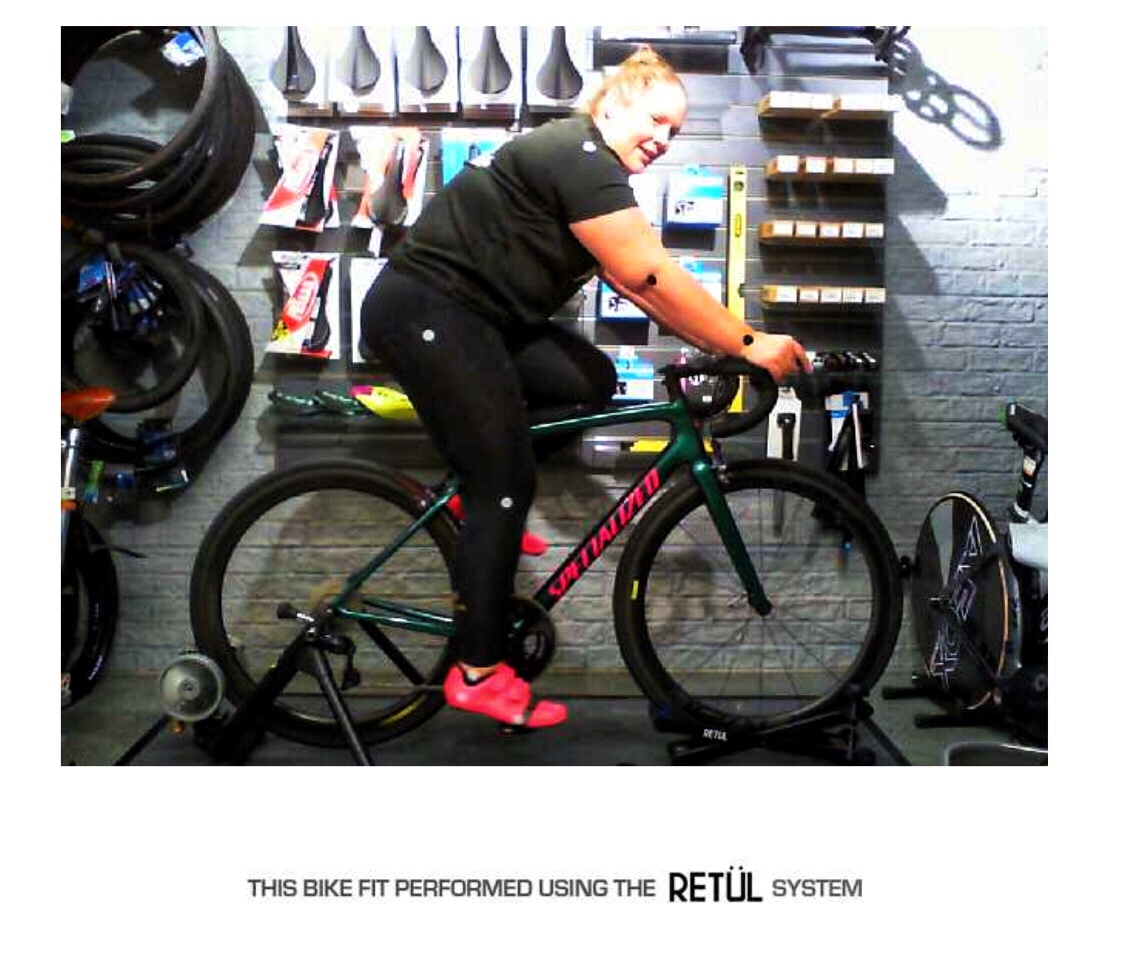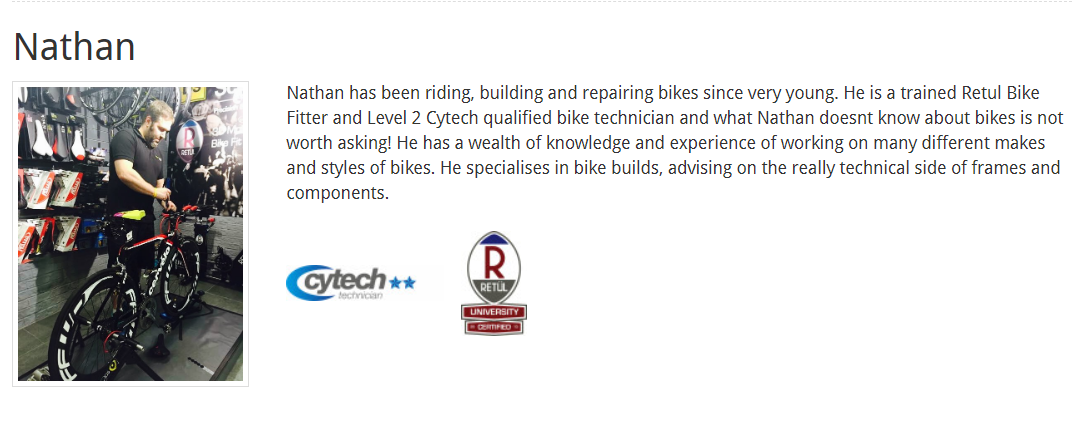Having recently purchased a new bike (insert happy dance here) I was keen to make sure that the set up is correct as my training increases and in turn the mileage. The main reason for this is to ensure I am comfortable in the cycling position but also to help with limiting any injuries and making sure I am cycling efficiently.
This is not the first bike fit I have had and previously I suffered with a knee issue and also pain the lower back and it is amazing what some simple adjustments can do. If you are thinking what can it do well the answer is wonders and I say this from first hand experience.

Comfort really is key when taking on endurance events especially and knowing I have a 300km ride in the middle of this year I was keen to make sure my set up was correct not only for the event but all the miles I will need in training.
Hand in hand with comfort is also efficiency. Sounds odd? Not really, because if you are comfortable in your cycling position you will be more efficient with your endurance in turn.
There is nothing worse than getting injured. We have probably all suffered whether it be a little niggle or a full blown injury that can even see you out of action for quite some time and whilst a bike fit will not guarantee that won’t happen, it will limit and prevent injury. This is because the fit will ensure your body is aligned in the correct way.
A good bike fit can make your riding feel as though it is on a brand new bike!
I have had all of my bike fits done at Yellow Jersey Cycles in Billericay by Nathan. Nathan is a Retul (as used by British Cycling) certified fitter.

There are other ways of bike fits being conducted but the benefit of a Retul fit is that it uses 3D technology and this means the measurements are accurate to within a millimetre. As their brand mission states:
‘Retul stands for being the most technically advanced bike fitting and product matching technology available on the market.’
So what happens during a bike fit? It is a thorough process that takes roughly 1.5 to 2 hours and includes the following:
- To start with there will be some basic tests to observe gait, flexibility and discuss any injuries and also goals.
- You will then hope onto your bike and have little pads attached to various parts of you (wrist, elbow, shoulder, hip, knee, ankle, heel, and toe) and this will provide the 3D image to the fitter as you cycle to show and provide real time information from each pedal stroke.
- There are certain parameters that each element should be within and the fitter can then identify those that sit outside that range and make the necessary adjustment to the bike set up.
- This is repeated for each side of your body (and if you are like me the little platform that is moved around to give the fitter the best view is probably the scariest part – I did once fall off a turbo trainer lets remember!).
- Once the fit is complete and both the fitter and you are happy a specialist tool is used to create a map of your bike measurements and this with the 3D results provides the fit details.
Voila!
The worst part? Peeling off those sticky little pads that are attached!
Most fitters will provide you with this information so you have it for reference for future use.

[…] Bike – kind of obvious but without it you won’t be getting very far and as I mentioned above depending on the type of ride you are doing the right bike is key, as is set up. For endurance events you want to ensure you are comfortable and in the correct position on the bike and a bike fit, in my opinion, is worth every penny. I have a blog post on the importance of a bike fit that you can read here. […]